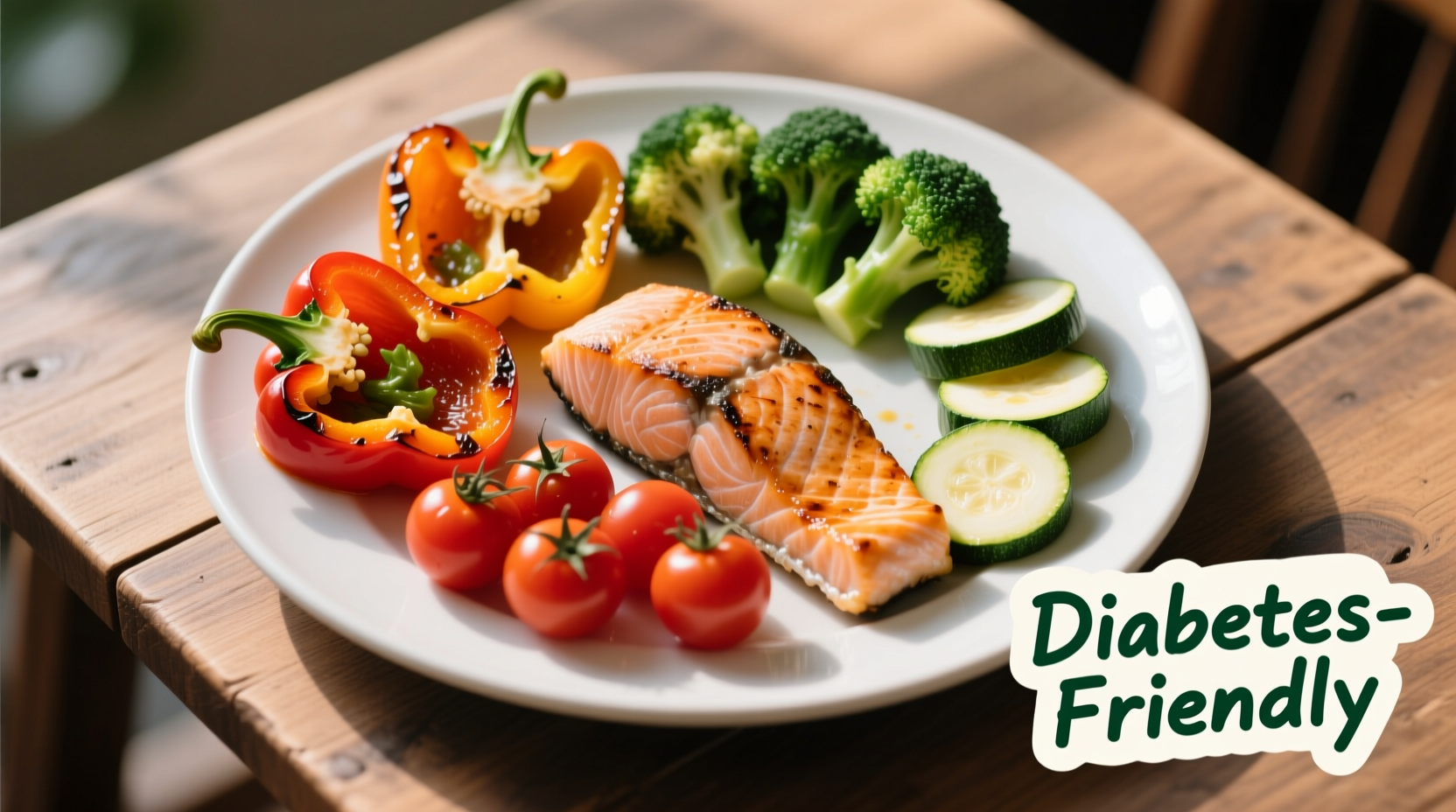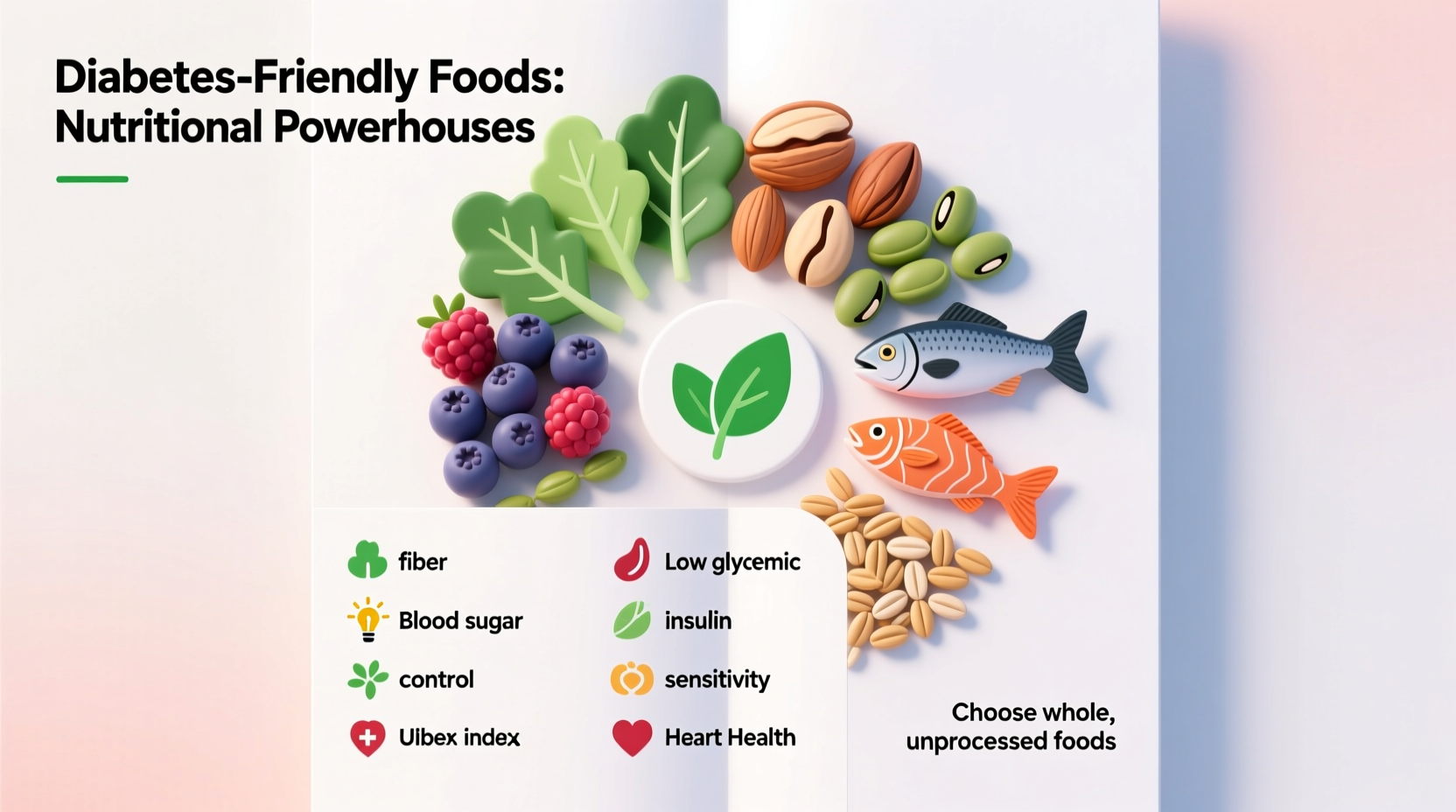Choosing the right foods is one of the most powerful tools for managing diabetes effectively. When you understand which foods support stable blood sugar levels and which ones cause dangerous spikes, you gain significant control over your condition. This guide delivers science-backed food recommendations that nutritionists and endocrinologists consistently recommend for people with type 1 and type 2 diabetes.
Why Food Choices Matter More Than You Think
What you eat directly impacts your blood glucose levels, insulin sensitivity, and long-term diabetes complications. According to the Centers for Disease Control and Prevention, proper nutrition can reduce HbA1c levels by 0.5% to 2.0%—comparable to some diabetes medications. The American Diabetes Association emphasizes that no single "diabetes diet" works for everyone, but certain food categories consistently deliver benefits.
Your Diabetes-Friendly Food Framework
Instead of focusing on restriction, build your meals around these evidence-supported food groups that help maintain steady blood sugar:
Non-Starchy Vegetables: Your Blood Sugar's Best Friend
Filling half your plate with non-starchy vegetables provides volume, fiber, and essential nutrients with minimal carbohydrate impact. These powerhouse foods include:
- Leafy greens (spinach, kale, Swiss chard)
- Cruciferous vegetables (broccoli, cauliflower, Brussels sprouts)
- Colorful options (bell peppers, tomatoes, eggplant)
- Other standouts (zucchini, asparagus, mushrooms)
Research published in Nutrition Reviews confirms that increasing non-starchy vegetable intake correlates with improved glycemic control. Their high fiber content slows glucose absorption while providing antioxidants that combat diabetes-related inflammation.
Fiber-Rich Fruits: Timing Matters
While fruit contains natural sugars, certain varieties offer significant benefits when consumed mindfully:
| Best Choices | Portion Size | When to Eat |
|---|---|---|
| Berries (strawberries, blueberries) | ¾ cup | With protein for balanced snack |
| Apples with skin | Small fruit (4 oz) | As part of main meal |
| Pears with skin | Small fruit (5 oz) | As dessert after protein-rich meal |
| Cherries | ½ cup | Post-workout recovery |
The American Diabetes Association recommends pairing fruits with protein or healthy fats to minimize blood sugar impact. Avoid fruit juices and dried fruits which concentrate sugars without fiber.

Smart Carbohydrate Selections
Not all carbs are created equal. Focus on complex carbohydrates with low glycemic index values:
- Whole grains: Quinoa, barley, oats, and 100% whole wheat products
- Legumes: Lentils, chickpeas, black beans (excellent protein-fiber combo)
- Sweet potatoes: Rich in beta-carotene with lower glycemic impact than white potatoes
A National Institute of Diabetes and Digestive and Kidney Diseases study found that replacing refined grains with whole grains reduced HbA1c by 0.5% in people with type 2 diabetes. Portion control remains essential—stick to 15-30 grams of carbs per meal depending on individual needs.
Protein Powerhouses
Lean proteins help maintain muscle mass and promote satiety without spiking blood sugar:
- Fatty fish (salmon, mackerel, sardines) rich in omega-3s
- Skinless poultry and eggs
- Plant-based options (tofu, tempeh, edamame)
- Lean cuts of beef or pork (look for "loin" or "round")
The Mayo Clinic recommends including protein at every meal to slow carbohydrate digestion. Their research shows that a Mediterranean-style eating pattern rich in plant proteins correlates with better long-term diabetes management.
Healthy Fats: The Unsung Heroes
Contrary to outdated advice, certain fats actually improve insulin sensitivity:
- Avocados and avocado oil
- Nuts and seeds (almonds, walnuts, chia seeds)
- Olive oil for cooking and dressings
- Fatty fish as mentioned previously
A landmark study in Diabetes Care demonstrated that replacing saturated fats with monounsaturated fats improved insulin sensitivity by 10-15% in participants with type 2 diabetes. Just remember that fats are calorie-dense, so practice portion awareness.
Practical Meal Planning Strategies
Translating these food choices into daily meals requires smart planning. Try these evidence-based approaches:
The Plate Method Made Simple
This visual technique eliminates complicated counting:
- Divide your plate in half: Fill one side with non-starchy vegetables
- Divide the remaining half: One quarter with lean protein, one quarter with healthy carbs
- Add a small serving of healthy fat (1 tsp olive oil, ¼ avocado)
Developed by the American Diabetes Association, this method consistently helps people achieve better post-meal blood sugar readings without requiring calorie or carb counting.
Smart Swaps for Common Problem Foods
Instead of feeling deprived, make strategic substitutions:
- White rice → Cauliflower rice or quinoa
- Pasta → Spiralized vegetables or legume-based pasta
- Sugary cereals → Oatmeal with cinnamon and berries
- Soda → Sparkling water with citrus slices
Important Context: When Good Foods Aren't Right for You
While these recommendations work for most people with diabetes, individual responses vary significantly. Certain medical conditions create important boundaries:
- Kidney disease may require limiting potassium-rich foods like bananas and oranges
- Gastroparesis (common in long-term diabetes) often necessitates lower-fiber meals
- Medication interactions can affect food choices (e.g., warfarin users need consistent vitamin K intake)
Always consult your healthcare team before making significant dietary changes, especially if you take insulin or medications that can cause hypoglycemia.
Evolution of Diabetes Dietary Guidance
Diabetes nutrition advice has evolved dramatically over the past decades:
- 1980s-1990s: Strict calorie and carbohydrate counting dominated with emphasis on low-fat diets
- 2000s: Glycemic index gained prominence but proved difficult for everyday use
- 2010s: Focus shifted to overall dietary patterns (Mediterranean, DASH diets)
- Today: Personalized nutrition based on individual metabolism, microbiome, and preferences
This progression reflects growing understanding that sustainable eating patterns beat rigid rules for long-term diabetes management.
Avoiding Common Misconceptions
Several persistent myths can derail your efforts:
- Myth: You must eliminate all sugar Truth: Small amounts of sugar can fit within a balanced meal plan when properly accounted for
- Myth: Special "diabetic foods" are necessary Truth: These often cost more and provide no special benefits
- Myth: Carbs are the enemy Truth: Quality and quantity matter more than complete elimination
The key is consistency—regular meal timing and balanced composition prevent dangerous blood sugar swings more effectively than extreme restrictions.
Putting It All Together: Sample Daily Menu
Here's how these principles translate to real-world eating:
- Breakfast: Veggie omelet with spinach and mushrooms, ½ avocado, small orange
- Lunch: Large salad with mixed greens, grilled chicken, chickpeas, olive oil dressing
- Snack: Greek yogurt with berries and chia seeds
- Dinner: Baked salmon, roasted Brussels sprouts, quinoa
- Evening: Small handful of almonds
This menu provides balanced nutrition while keeping carbohydrate intake consistent throughout the day—a critical factor for blood sugar control.











 浙公网安备
33010002000092号
浙公网安备
33010002000092号 浙B2-20120091-4
浙B2-20120091-4